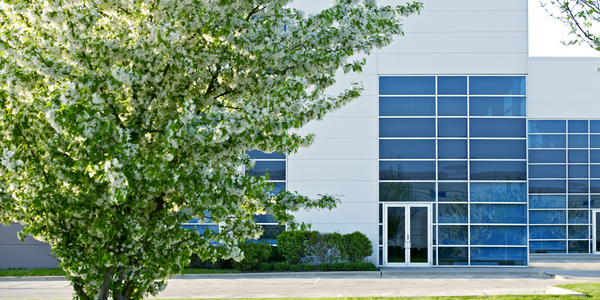Applicable Industries
- Cement
Use Cases
- Track & Trace of Assets
- Visual Quality Detection
About The Customer
The primary users of the Wellifi - Flatten the Curve app are individuals in the United States who want to stay informed about the spread of COVID-19 in their area and other locations that are important to them. These users value having access to up-to-date, visual data that they can easily understand and share with others. They are likely to be tech-savvy and comfortable using apps and social networking features. The app also appeals to users who are interested in tracking their personal health and fitness, as the founders plan to incorporate virus tracking into a larger health and fitness app in the future.
The Challenge
The COVID-19 pandemic has necessitated the need for real-time, accurate, and easily accessible data to track the spread of the virus. The founders of Wellifi - Flatten the Curve, Craig Bramscher and Ron Hom, identified this need and sought to create an app that would provide visual data on COVID-19 cases in the United States. The challenge was to develop an app that would allow users to view up-to-date numbers of cases at a glance, track locations that are important to them, and share this information with friends and family. The founders also wanted to chart and map out trends, which they believed were more important than total numbers in the context of understanding how different cities, states, and regions in the US were faring.
The Solution
The solution was the development of the Wellifi - Flatten the Curve app. The app was built using Bubble, a powerful no-code solution that allows users to create fully customizable web applications and workflows. The app utilizes information from the New York Times to track COVID-19 data in the United States. It allows users to browse the data, chart and map out trends, and track locations that are important to them. The app also includes a social networking feature that enables users to share data with friends and family and find other people who care about the same locations. The founders plan to make virus tracking a part of their forthcoming app that will track personal health and fitness, with Flatten the Curve being a small component of the bigger application.
Operational Impact
Quantitative Benefit

Case Study missing?
Start adding your own!
Register with your work email and create a new case study profile for your business.
Related Case Studies.

Case Study
System 800xA at Indian Cement Plants
Chettinad Cement recognized that further efficiencies could be achieved in its cement manufacturing process. It looked to investing in comprehensive operational and control technologies to manage and derive productivity and energy efficiency gains from the assets on Line 2, their second plant in India.

Case Study
Digital Transformation of Atlanta Grout & Tile: An IoT Case Study
Atlanta Grout & Tile, a Tile, Stone & Grout restoration company based in Woodstock, Georgia, was facing challenges with its traditional business model. Despite steady growth over the years, the company was falling behind the web revolution and missing out on the opportunity to tap into a new consumer base. They were using independent software from different vendors for each of their department information and workforce management. This resulted in a lot of manual work on excel and the need to export/import data between different systems. This not only increased overhead costs but also slowed down their response to clients. The company also had to prepare numerous reports manually and lacked access to customer trends for effective business decision-making.

Case Study
Revolutionizing Construction Equipment Rental: A Case Study on ProsRent and ENO8
ProsRent, a startup that won the 'Best Financial Opportunity' and 'Best Pitch' at CodeLaunch 2016, aimed to revolutionize the way construction professionals source and rent heavy equipment. In the construction industry, project managers and contractors typically rent heavy equipment from supply companies. However, predicting inventory can be challenging, and finding the required equipment at the right time and place can be a hassle. If the preferred vendor doesn't have the required equipment, it results in wasted time and money in searching for it, often leading to higher costs due to non-preferred rates and increased delivery costs if the vendor is located far from the job site. Suppliers, on the other hand, desired access to a wider base of trusted renters that they didn't have to vet themselves and wanted to offer dynamic rental pricing based on demand and availability in their market. ProsRent's challenge was to produce a minimum viable product that was fast and first to market but also strong enough to engender loyalty and repeat business from the target market.

Case Study
AI-based Automation for Commercial Office HVAC: A Verdigris Case Study
Modern buildings are required to run longer hours, support a variety of end uses, and contribute to higher levels of economic productivity, leaving a thin margin for error. However, even the most advanced building and environmental control systems have failed to adequately support facilities and operations management. Buildings are often inefficient and the people using them are underserved. To meet occupant comfort and maintain cost and energy efficiency, a dynamic, AI-assisted approach is needed.

Case Study
Revamping EE's Legacy ERP: A Case Study on BT's Strategic Transformation
EE, even after its merger with BT, was operating its ERP estate on legacy infrastructure, hosted on the premises of a third-party supplier. This outdated system resulted in a volume-based operational model, higher time to market, longer delivery cycles, and unsatisfactory customer experience. BT recognized the need for a strategic transformation of these aging ERP systems and sought a partner who could proactively manage application services. The partner was also expected to handle development requirements associated with application management services, drive accountability, and ownership with a time and target-driven transformation of these services. BT's primary goals were to improve customer experience, reduce cycle time, and measure these improvements with precision.








